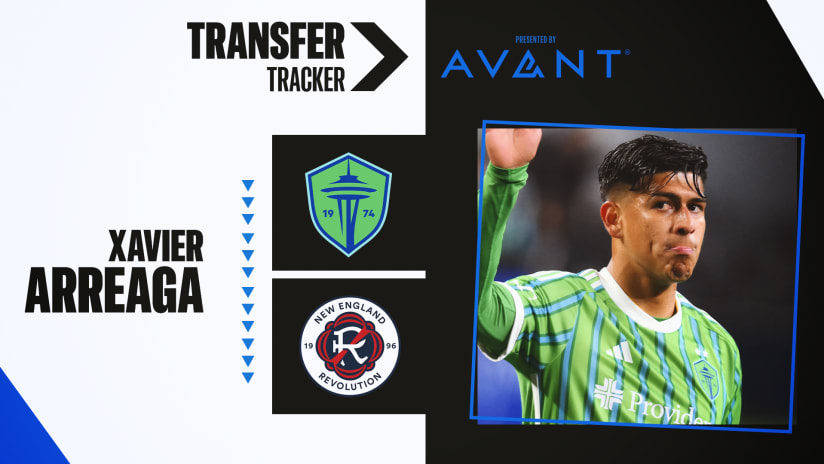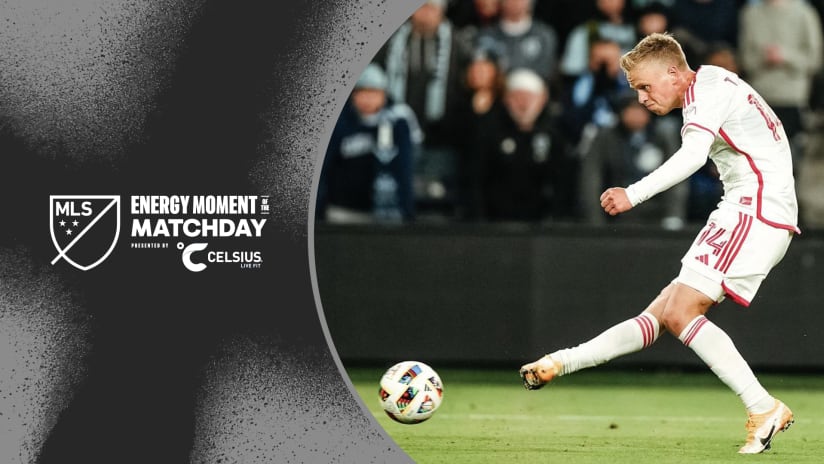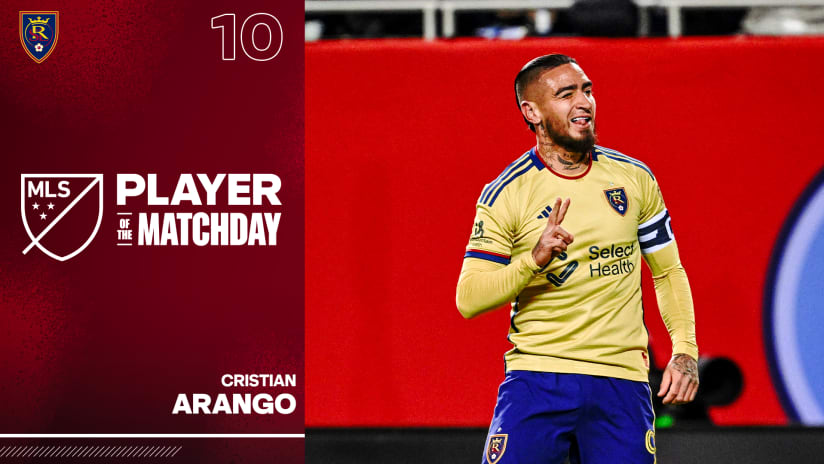The Opta Spotlight series returns to MLSsoccer.com as Opta's data scientists provide a detailed look at performance and apply their world-renowned soccer analysis to MLS.
"We're really proud of the work we do with clubs and leagues all over the world and we look forward to bringing the same top quality insight to MLS fans,” said Opta EVP, Angus McNab.
Opta is the official data provider of MLS for six years running. For more of Opta’s MLS analysis, follow @OptaJack on Twitter and visit the OptaPro blog.
If you’ve watched any Montreal Impact games over the last couple of years or so, you’ve undoubtedly seen Ignacio Piatti pick up the ball and just run at people. He runs and runs and runs. Sometimes these dribbles culminate in a killer pass or goal, like this one against New England in October 2015:
Piatti picks up the ball just past the halfway line, puts Juan Agudelo on the floor, makes Jermaine Jones do a spin, breezes past Scott Caldwell and runs towards a compact New England back four. While holding off a challenge, Piatti then caresses the ball into the top right hand corner from just outside the 18-yard box.
It’s a marvelous goal, and through breaking the move down into several parts we can learn more about this play. We could discuss the several take-ons made and the shot made outside of the area, or the strength and speed by Piatti to hold off the several challenges on him. What I think is interesting though, is the distance Piatti covers.
Plenty of analytical work in soccer has focused on actions on the ball, for example the creation of expected goals models to help us better understand the quality of the chances a team is creating, or passing networks that allow us to create a strong visual breakdown of how a team passes the ball. There’s been little work analyzing how a team moves the ball when they’re not passing it. I’ve termed this action a “carry” – which is exactly what has happened in the Piatti example – and defined it as the following:
The distance and direction travelled by a player while in possession of the ball between actions.
From this we can calculate two different carry distances. The first is what I will refer to as carry distance, which measures the raw distance a player moves the ball from receiving the ball to the next action with the ball. The second is direct carry distance, which measures how far a player progresses the ball towards the center of the goal, which is a good proxy for directness. Separating these two is important – a player who has a high carry distance but low direct carry distance is moving the ball, but potentially in unproductive ways.
It’s worth noting that both of these distances are estimates, as players don’t run in straight lines all of the time when in possession of the ball we don’t pick up all of their movement, but it’s a good approximation of where they move it when it’s at their feet.
You can read more about carries in the original blog on OptaPro.
So which teams in MLS, according to this metric, are the most direct? By taking the total direct carry distance (remember that’s the distance the ball is moved towards the center of the opposition goal) and dividing it by total carry distance we can get a good understanding of how direct a team is. I’ve named this metric the Carry Directness %.

The Portland Timbers top the league in this metric, having carry directness of 50 percent, with Cascadian rivals Seattle Sounders bottom of the league, with just 39 percent of all carries being towards goal. The league average for carry directness is 44 percent - with Real Salt Lake embodying the average MLS side. Looking at correlations between this metric and things that matter (shots, goals, wins, etc.) is ongoing – so for now this is just a metric that tells us about a team's style. Regardless, it’s still interesting to know how direct these teams are at moving the ball towards the goal.
Going a step further, looking at the top carriers on each team can show us which players are advancing the ball the most on each team. The data below is filtered to only include players who have made at least 200 carries, and displays the carry distance per each carry made. I’ve also filtered players who’ve left the league out of this dataset.
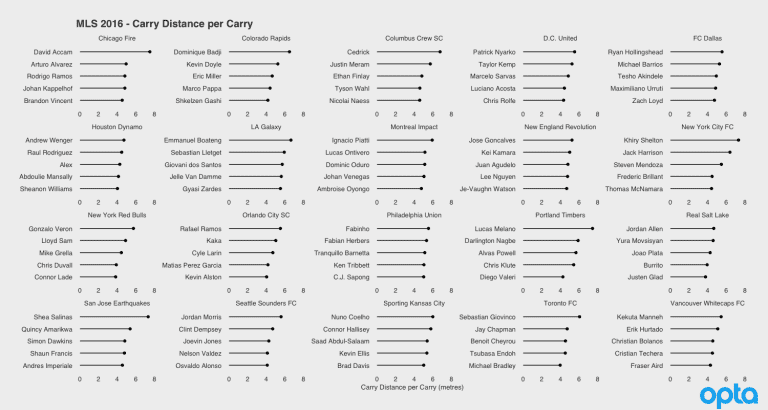
The majority of teams are lead by wingers or attacking fullbacks – this isn’t overly surprising though given the roles that these players fulfill when on the ball. Anomalies (for me) include Jose Goncalves and Nuno Coelho, both of whom are tasked with bringing the ball out of the back for their respective sides and top their sides in this metric. David Accam is miles ahead of his teammates, as are Lucas Melano and Shea Salinas. There are also some interesting team trends here; the Whitecaps’ top 5 all sit quite close together, as do those of the Union and New England.
Carry distance alone, however, can only tell us so much. The players listed above are those who all carry the ball for the greater distance, but this may not necessarily be productive dribbling. By doing a similar breakdown to the above, but by looking at direct carry distance instead, we can get a better understanding of who is advancing the ball towards the opposition’s goal.
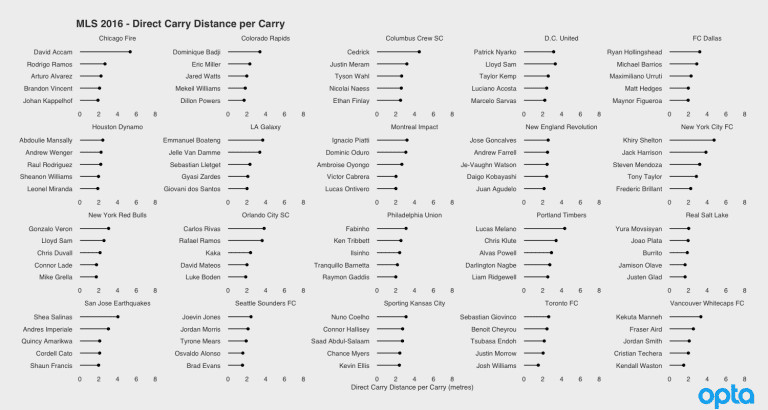
Accam once again dominates his teammates in this category, with 5.8 yards of his carries being directly towards the opponent’s goal. Compared to his carry distance per carry of 8.3 meters, he’s one of the most direct dribblers in the league. Khiry Shelton is second in terms of direct carry distance per carry, carrying the ball 5.1 yards towards goal per carry. Jack Harrison isn’t far behind him at NYCFC either, highlighting the attacking threat from the flanks at head coach Patrick Vieira’s disposal.
Looking at FC Dallas, Ryan Hollingshead leads the team in this metric, carrying the ball 3.5 yards towards goal per carry. This is slightly behind the recently departed Fabian Castillo, who carried the ball 4.5 yards directly towards goal per carry, but highlights his ability to carry the ball nonetheless. In the run-up to the Audi 2016 MLS Cup playoffs and for the playoffs themselves, Hollingshead might represent a useful replacement for Mauro Rosales should he be required due to his dribbling prowess.
Piatti, who was previously ahead of all of his teammates in terms of carry distance per carry is level with Dominic Oduro in this example – highlighting the directness of Oduro and how Piatti’s mixed roles of sometimes playing at No. 10 and sometimes out wide mean he’s not always dribbling directly at the goal.
Finally, Real Salt Lake are an interesting team, specifically with regards to Joao Plata and Juan Manuel ‘Burrito’ Martinez. You might expect the pair to be a lot more direct per carry, but they're carrying 2.2 and 2.1 yards towards goal, respectively. This low distance will be in part due to them carrying 4.7 and 4.3 yards per carry respectively. Overall then, they are actually quite direct considering the short distances traveled.
Carries can also offer a way of looking at how a player’s role has changed (or not changed) over games and seasons. Javier Morales offers a nice case study here, as he is a player who has played in a system that has been tweaked over the years. Looking at 2013-2016, we can see how he’s changed his game in terms of carries per 90.

In the above table, Morales is getting more carries per 90 minutes than ever before, and his numbers look to be growing season on season. The significant change seems to have come in-between the 2014 and 2015 seasons.
Adding additional context to this means we can understand if Morales is moving the ball the same distance per carry over these seasons, or if he is moving the ball in different ways, alongside receiving it more.

As we can see here, the change between the 2014 and 2015 seasons is apparent again. Morales was carrying the ball roughly 10 percent further per carry in 2015 than 2014, although this has so far lowered to just 4.0 yards per carry in 2016, his lowest total.
Comparatively, Morales’ direct carry has remained largely flat across the four seasons at around 1.7 yards. Although his carry directness percentage has fluctuated around slightly, these are fine margins and not indicative of any major change.
To conclude, carries are a different way of evaluating the dribbling capabilities of players. It allows comparison across different seasons and roles, and means we can better quantify players who move the ball and whether that movement is towards goal or not.



